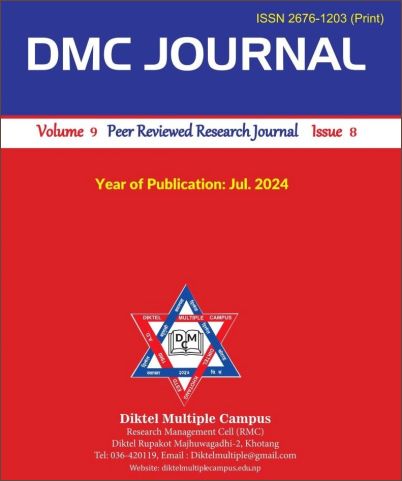Chamling and English Noun System: A Comparative Study
DOI:
https://doi.org/10.3126/dmcj.v9i8.74879Keywords:
compound nouns, derivational noun, homonymy nouns, onomatopoeia nouns, verbal noun, reduplicative nounsAbstract
This article aims to explore the Chamling noun system and its various applications. The noun structure in Chamling exhibits considerable differences from that of English across multiple dimensions. These two languages originate from distinct language families, so their grammatical structures are incomparable. Consequently, children who speak Chamling often encounter challenges when learning the English noun system due to the influence of their native language. This article aims to address the challenges Chamling-speaking students face in learning the noun system of the English language as a result of their mother tongue. Moreover, it serves as a resource for linguists, educators, and others who are interested in learning the noun system of the Chamling language. Data were collected through field visits to two distinct dialect regions of the Chamling language: Diktel and Halesi. In this study, nouns are classified according to several criteria, which include semantics, countability, and morphology. This classification leads to the identification of various categories, including proper nouns, common nouns, abstract nouns, material nouns, collective nouns, countable nouns, uncountable nouns, concrete nouns, verbal nouns, and compound nouns. The entire noun system of Chamling is systematically analyzed and compared with the noun system of English.




